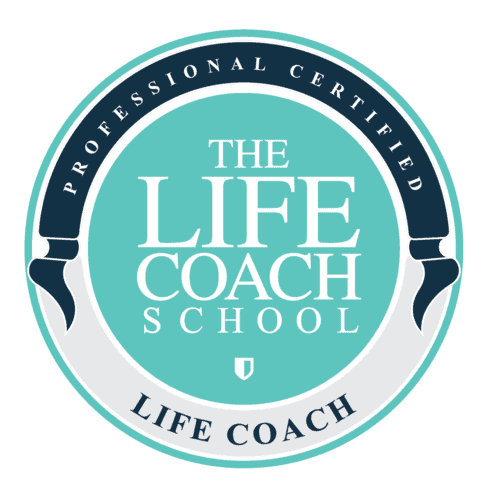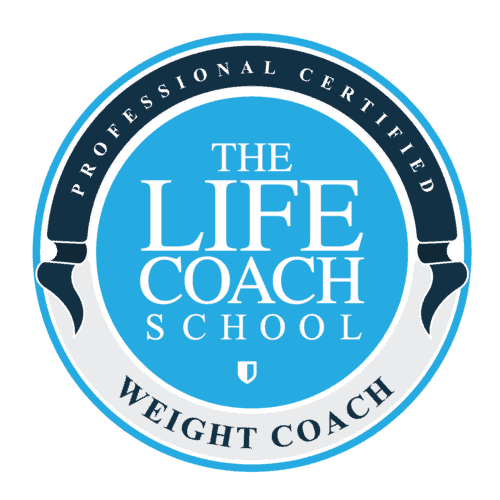Think of your emotionally empowered child as a strong, powerful tree. There are four main pieces of this thriving tree: The ground nourishing the tree, the tree’s roots, the tree’s trunk, and the tree’s branches. The ground nourishing the tree is you, the emotionally empowered parent. The roots of the tree are the intertwining beliefs that they are loved, life is good and life happens for them. The trunk of the tree is their emotional intelligence, their ability to manage and process their emotions from an empowered, non-reactive steady place. The branches are all the special pieces that make them the unique beings they are.
We can not give to our kids what we don’t have. Looking at our kids as a tree helps me see many things. First, while still living at home, they will only be as strong as me. I can not give my kids what I don’t have. The better I care for myself, my mental health, emotional health, and physical health, the better they’ll be able to care for theirs. Second, viewing their belief that life happens for them and that they are inherently good as the root of their being, verifies its’ importance. Finally, I see how the stronger and more sturdy their trunk of emotional intelligence is, the more resilient and strong they will grow to be in all of their endeavors.
In order for our kids to be able to process their emotions from a strong, empowered place, we parents have to know how to do that. Gulp. If you’re anything like me, I did not know how to manage my own emotions in effective, healthy ways. I certainly knew how to manage my emotions in ineffective, unhealthy ways: shopping, eating, over-exercising, blaming others, procrastinating, etc. I also tried to manage my emotions by trying to control what happened ahead of time: For many years I came at parenting from a place of control. Trying to control my kids experiences (helicopter mama-extraordinaire) while also trying to control how everyone felt in the process. At some point, I realized that not only was it impossible to control others, it made me one anxious, overstrung mom.
“When we don’t know how to experience our own feelings, we can’t teach our children how to safely and compassionately process theirs.”
So how do we do this?
Good news is, once you learn how to process your emotions, you can teach your kids how to process theirs. The steps are the same, regardless of age. If you need a quick review of how our brain works and where emotions come from, listen in to the first part of the blog from the beginning of this month (linked here). Otherwise, if you’ve been listening for a while, you know that the thoughts we focus on, create the feelings we feel. What’s happening is the thoughts we focus on release a chemical in our brain that creates the energy of the emotion in our body. You’ve heard me say before, emotions are energy in motion. Emotions are actually an energy in your body. They can not be wished away. Once the energy is in your body, it needs to be processed. If your child is upset, it does not help to say: “but you shouldn’t be sad” or “you shouldn’t be disappointed”. The energy from the emotion is already in their body and needs to be released. How many times have you done this to yourself as an adult? Told yourself you “shouldn’t” be disappointed or upset even though you were? News flash: it doesn’t work one and it doesn’t work on them. Once you’ve focused in on the thought that releases the energy of the emotion, the emotion must be processed. I caught myself doing this just yesterday. My boys are with their dad on vacation and I thought of how I wouldn’t see them until next week. Thinking that thought made me feel lonely. I caught myself trying to avoid feeling the loneliness emotion by saying to myself that “I shouldn’t feel lonely because they were having fun and a great experience.” Uh, hello Susie Q, they could be having the time of their life but if I think a thought that makes me feel lonely, I can still feel lonely. Once the energy is in my body it needs to be processed, and then, and only then, can I focus in on a more empowering thought.
How To Process Emotions?
Follow these three steps:
1) Name it.
Feelings are one word. Say what you feel. Here’s a list for you to get started.
2) Describe it.
Emotions are energy in your body. Where do you feel the feeling? What does sadness feel like? What does loneliness feel like? I encourage my kids to explain the physical feeling of the emotion in detail as if they were explaining it to an alien who had never felt that emotion before. Where exactly do they feel it in their body? Is it hot? Cold? Tight? The more descriptive the better.
3) Sit with it.
Allow yourself to feel the emotion. The physical sensation of the feeling is not acutely painful. You are capable of feeling it though we are accustomed to resisting this step. Sit and allow the energy to move through you. Emotions come in waves -they come and they go. Instead of explaining why you’re feeling what you’re feeling, judging it, or resisting it, sit with it. Experience it. I like to put my hand on my heart when I’m feeling a more difficult emotion. I like to lift my hands to the sky when I’m feeling a joyous experience. This is the beauty of being human. We are here to feel our emotions. Feel your life. Live your experience.
Practice Emotional Intelligence
Practice the above 3 steps consciously as many times as you can during your day with both big and small emotions.
- How do you feel when waiting in line at the grocery store? Name it. Describe it. Sit with it.
- How do you feel when you see your husband after a day of work? Name it. Describe where you feel it in your body. Sit with it.
We get good at what we practice. Let’s practice emotional intelligence. The better you get, the more capable you get at modeling it for your kids. Begin bringing emotions into your household. Begin sharing your emotions with your family. Eg: “I feel nervous because I haven’t prepared for my big talk next week. My chest feels tight and hot.” You can also verbally explain and model how nothing has gone wrong. It’s normal to feel nervous when we haven’t prepared for something big. We’re not going to fall to the ground or blow up. We can feel the feeling without pouring a glass of wine or complaining about the event organizer.
We can model ourselves moving through the 3 steps. We name it, describe it, allow it. We get to process the emotion and then decide what to do from a non-reactive place. This is where we can see the difference between feeling our emotions and reacting to our emotions.
Think of the last time you felt anxious. What did you do? Sit with your hand on your heart and tell yourself it was okay? Chuckle. I’ll bet you did something more along the lines of getting on your phone to shop, putting food in your mouth, getting on Facebook to distract, etc… Feeling our emotions without reacting to them can be terrifying but it gets easier with practice. When we remind ourselves that feelings are like waves, they come and they go, we gain power. They’re not good or bad but part of the human experience. When I remind myself of other times in my life when I’ve felt strong feelings (and survived), I gain confidence to do it again.
Let’s look at the second major piece of empowering our kids: their roots. When our children view life as happening for them, rather than happening to them, they approach life with a mindset of growth and expansiveness. Look around you. How many people go through their life looking for someone or something to blame? How does that leave them feeling? Powerless and out-of-control. They move through life a victim of their experiences. I lived this way for years and can clearly attest to the difference of feeling when I approach life as happening for me, rather than to me. When I view my life and my experiences as opportunities for me to learn and become a more conscious being, I feel empowered and in charge of my life. When I viewed my experiences as happening to me and blamed others, I felt out of control, anxious, and helpless.
“When I view my life and my experiences as opportunities for me to learn and become a more conscious being, I feel empowered and in charge of my life.”
As a child, I did not have the roots of my tree. My parents’ love of me was based on conditions: my good grades, my athletic performance, my ability to behave and act in a way that fit in with their social circles. I was taught that life happened to me and that left me reactive and externally focused. I became a massive people pleaser, pleasing everyone but myself. When my kids were younger, I parented similar to what was modeled for me. Like my parents, I parented the way I was parented. I did the best I could with the knowledge I had. That said, I now know better and so, I do better. One of my main parenting mantras is “The disfunction stops here”. I consciously and consistently model how to process emotions in front of my kids. I model and verbalize to my kids that my love for them is not contingent on their behavior, their grades, or their actions. I love them period. No matter what. I also model how life is inherently good, even in the difficult times. I share my experiences and speak of “growth opportunities” with them and myself. I don’t hide life’s difficult moments from them but I also don’t add drama to them. When I let life be as it is going to be, without trying to micromanage it, I drop the drama and remain in control of my life experience. I am not a victim of life, nor are they. Life happens for us; for our greater good. When my kids and I accept that things are happening around us for our greater good, for us to learn, for us to expand and grow into that next best version of ourselves, we discover a lightness of being and existing that is freeing. To me this is emotional empowerment.
The ability to process our emotions without reacting to them takes daily practice and is something I expect to be working on for the rest of my life. The more I involve my kids in my safe emotional management, the more they develop their own emotional intelligence. When my kids accept difficult emotions as a natural and inevitable part of life, they don’t fear it as much. They acknowledge their feelings and have the confidence to process them. The trunk of their tree provides the stability to know they can handle whatever emotion comes their way. Their roots provide them the confidence and trust in the world to know that everything that’s happening is happening for their higher good. The rich and supportive soil is there to pour love on them and connect with them whenever and however needed.
Coming Up
Next week we will dive into how we can discipline and raise our children from this mindful, conscious place. Conscious parenting does not mean permissive parenting. Rather, it takes the true definition of discipline, (to teach) and layers it over our unconditional love and understanding of our kids and of ourselves. For now, practice the 3-steps of emotional processing. Dig into feeling all of what this magnificent life has to offer. Know I am here to help on your journey. Not all days are easy but all days are opportunities.
When my kids and I accept that things are happening around us for our greater good, for us to learn, for us to expand and grow into that next best version of ourselves, we discover a lightness of being and existing that is freeing. This is emotional empowerment.
Did you like this post? Sign up for Susie’s Weekly WELLNESS Newsletter. She’s a Certified Life and Wellness Coach with over 10 years experience helping women live lives they love.
LISTEN HERE:
WATCH HERE:







Standing Tall Against Bullying & Negative Influences – Guide kids to face challenges with courage and wisdom. Thank you
thanks for highlighting an important thing Rishav.